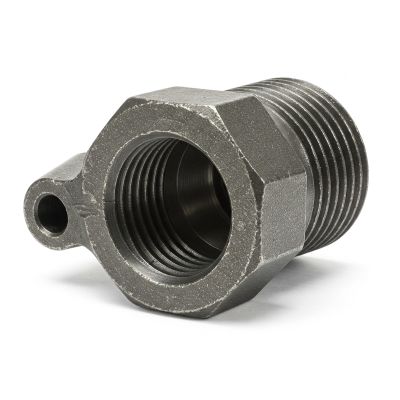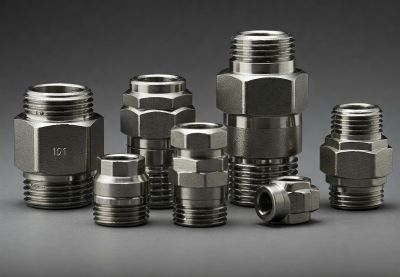Threaded pipe fittings are essential in plumbing and industrial applications, providing a secure method for connecting pipes and other components. Choosing the right thread type ensures a leak-free and durable connection, making it crucial for professionals and DIY enthusiasts alike to understand the different types of threads used in plumbing systems.
Two commonly used thread types are FIP (Female Iron Pipe) and NPT (National Pipe Thread). While they may appear similar, they have distinct characteristics and applications. Understanding their differences and compatibility is key to selecting the right fitting for a plumbing project.
Understanding FIP and NPT Threads
What is FIP?
Female Iron Pipe (FIP) refers to a type of threaded connection that has internal (female) threads designed to mate with a male-threaded fitting. These fittings are commonly used in plumbing systems for water and gas applications.
Characteristics of FIP Threads:
➡️ Always internal (female) threads.
➡️ Typically used to connect with MIP (Male Iron Pipe) or other compatible male-threaded fittings.
➡️ Often used in metal piping systems made of brass, copper, or galvanized steel.
Common Applications of FIP Fittings:
➡️ Water supply lines.
➡️ Gas pipelines.
➡️ Industrial plumbing systems.
What is NPT?
National Pipe Thread (NPT) is a standard thread type commonly used in the United States for plumbing and industrial applications. It follows a tapered thread design, which helps create a secure and leak-resistant connection.
Characteristics of NPT Threads:
➡️ Available in both male (MPT) and female (FPT) configurations.
➡️ Tapered threads that tighten progressively as they are screwed together.
➡️ Requires thread sealant (Teflon tape or pipe dope) to ensure a watertight seal.
Common Applications of NPT Threads:
➡️ Water and gas piping systems.
➡️ HVAC and compressed air systems.
➡️ Industrial and mechanical applications requiring high-pressure seals.
Key Differences Between FIP and NPT
1. Thread Type and Structure
➡️ FIP Threads: Always female, designed to connect with male-threaded fittings like MIP (Male Iron Pipe).
➡️ NPT Threads: Available in both male and female versions, with a tapered design for sealing.
2. Tapered vs. Straight Threads
➡️ NPT threads are always tapered, meaning the diameter decreases slightly toward the end of the fitting. This taper creates a mechanical seal when tightened.
➡️ FIP threads can be either tapered or straight, depending on the application. They typically rely on male-threaded components to create a tight fit.
3. Sealing and Leak Prevention
➡️ NPT threads require Teflon tape or pipe dope to ensure a leak-proof connection, as the tapered design alone may not create a complete seal.
➡️ FIP fittings often depend on the male fitting’s design and additional sealing materials to prevent leaks.
4. Usage and Compatibility
|
Feature |
FIP Threads |
NPT Threads |
|
Thread Type |
Female (internal) |
Male & Female (tapered) |
|
Sealing Method |
Requires a male-threaded fitting & sealant |
Requires Teflon tape or pipe dope |
|
Application |
Water, gas, industrial plumbing |
Plumbing, HVAC, compressed air |
|
Tapered? |
Can be tapered or straight |
Always tapered |
5. Can FIP and NPT Be Used Interchangeably?
While FIP and NPT fittings can often be used together, it is essential to check for compatibility. Since FIP is a female-threaded connection, it will typically work with MIP (Male Iron Pipe) fittings, which are also designed with NPT threading. However, ensuring the correct thread pitch and taper is crucial to prevent leaks.
How FIP and NPT Threads Connect Properly
Steps for Ensuring a Secure Fit:
-
Match Male and Female Threads Correctly – Ensure that the FIP fitting is properly matched with a compatible MIP or NPT male-threaded fitting.
-
Use Thread Sealant – Apply Teflon tape or pipe dope to the male-threaded fitting before connecting to ensure a leak-free joint.
-
Hand Tighten First – Begin by hand-tightening the connection to avoid cross-threading.
-
Use the Correct Wrench – After hand-tightening, use a pipe wrench or adjustable wrench to secure the fitting further. Avoid over-tightening, as this can damage the threads.
-
Check for Leaks – Turn on the water or gas supply and inspect the connection for any leaks. If necessary, reapply sealant and retighten.
Mistakes to Avoid:
➡️ Over-tightening – Can damage threads and cause leaks.
➡️ Using Mismatched Fittings – Always ensure that FIP fittings connect with MIP or NPT male threads of the correct size.
➡️ Neglecting Thread Sealant – Without Teflon tape or pipe dope, leaks are more likely to occur.
Conclusion
FIP and NPT threads are both widely used in plumbing and industrial applications, but they have important differences that impact their compatibility and function.
Key Takeaways:
-
FIP (Female Iron Pipe) threads are always female and designed to connect with male-threaded fittings, often requiring sealing materials.
-
NPT (National Pipe Thread) fittings have a tapered design that provides a tight seal when properly installed.
-
Teflon tape or pipe dope is recommended for both types to ensure a leak-free connection.
-
Proper installation techniques, including correct tightening and thread alignment, are crucial to prevent leaks and ensure durability.
By understanding these differences and following best practices for installation, you can ensure a secure and long-lasting plumbing system. Always check compatibility before connecting fittings and use the right sealing methods to achieve optimal performance.
Post time: Feb-20-2025



